Flavor Bombs Guaranteed to Transform Your Cooking
10 game-changing ingredients + my go-to recipes showcasing them
Hi! If you're new here, welcome to Dish Lister! This newsletter offers tested, trusted recipes, useful kitchen tips, and curated recommendations designed to inspire and bring joy to both eating in and dining out. Whether you're a seasoned foodie or simply looking to try something new, there's always something delicious to discover here. Subscribe today and add a little excitement to your food routine!
I was recently listening to an episode of
’s Dinner Plan podcast with fashion designer and cookbook author Peter Som (his Family Style cookbook is a recent favorite of mine), and they were talking about “flavor bombs.” It got me thinking: what are the go-to ingredients I reach for time and time again to make dishes even more flavorful and delicious? And what are some of the best recipes I’ve made using them?But first, taking a step back—what is a flavor bomb, exactly? And why are they so important (and wonderful) to incorporate into our cooking?
Flavor bombs are those ingredients that deliver a concentrated burst of flavor to any dish. They can be a single ingredient, a combination of ingredients, a condiment, or a seasoning. Many, but not all, bring a deliciously savory, umami-rich depth to foods. They’re meant to complement, not overwhelm. Best of all, a little goes a long way.
You know how a sprinkle of Parmesan makes pasta taste extra special? Or how a drizzle of sriracha adds a bold kick? Or how pickled onions can bring a salad to life? Even a Parmesan rind simmered in a soup base lends deep, delicious umami (try this if you haven’t already!). That’s the power of a good flavor bomb.
I like to think of flavor bombs as low effort, high reward ingredients, with the reward being enhanced depth and flavor. Whenever I see one in a recipe, it’s usually a good sign the dish will be flavorful—and definitely not boring.
How are flavor bombs used? They can form the foundation of a dish, be used in dressings or marinades, or get added at the end of cooking to provide rich flavor that doesn’t cook off. They can also serve as a garnish or finishing touch to a dish.
Choosing my ten favorite flavor bombs wasn’t easy—there are so many great ones! But ultimately, I landed on the ones that dominate my “to-make” recipe list, that I’m constantly restocking, and that I honestly can’t imagine cooking without.
Now I’m sharing my picks with you, so you can stock them in your pantry too—if you don’t already have them! And if you do, start using them more. Because they have the power to transform any dish from ordinary to extraordinary, or from basic to exciting and multi-dimensional, in a matter of seconds.
What are some of your essential flavor bombs? Please share them here!
Ok, time to dish!
My Top 10 Flavor Bombs
In no particular order, these are the go-to flavor-boosting ingredients that I use constantly to make dishes truly sing, plus some of the best recipes I make showcasing them:
PARMESAN CHEESE
Parmesan cheese probably earns my “most valuable player in the kitchen” award. Its rich, savory umami flavor—thanks to a high glutamate content—elevates everything from pasta and salads to chicken cutlet breading. I go through it at an almost ridiculous pace.
And, in case you’re wondering, I prefer the fresh stuff, but I also keep a tub of grated cheese on hand for when I’m pressed for time (which is often).
Recipes to Try:
Creamy Parmesan Peppercorn Dressing, James Delmage, Sip and Feast.
Cheesy Truffled Popcorn, Alex Guarnaschelli, Cook With Me.
Parmesan Broccoli with Hot Honey Chili Crisp, Peter Som, from Family Style cookbook. Also has chili crisp (FB #3).
Cacio e Pepe Butter, Joshua McFadden, from Six Seasons cookbook. Or really Cacio e Pepe anything!
ANCHOVIES
Anchovies are a small, oily fish native to the Mediterranean that are usually cured in salt for a few months, and then rinsed, filleted, and packed in oil (ideally olive oil, which is key to their flavor). Their intensely salty, briny, umami flavor—a result of the curing process—adds tremendous depth and complexity to sauces, dressings, and salads. If you still think of them as just a much-maligned pizza topping, think again.
Recipes to Try:
Savory Caesar Dip, Adam Dolge, Serious Eats. Also has Parmesan Cheese (FB#1).
Garlicky Chicken with Lemon-Anchovy Sauce, Melissa Clark, New York Times Cooking. Also has capers (FB#10).
Julia’s Caesar, Julia Turshen, from Small Victories cookbook (online at Dinner A Love Story). Also has Parmesan Cheese (FB#1).
CHILI CRISP
I have about three different chili crisps in my fridge right now, and it never seems like enough. Chili crisp is a crunchy, savory mix of dried chiles, aromatics like fried garlic or shallots, spices, and oil. This super versatile condiment packs a spicy, savory flavor punch and makes almost any dish infinitely more interesting.
Recipes to Try:
Chili Crisp Feta Eggs, viral recipe with many versions online. Here’s a good recipe to try that’s similar to how I make them.
Chili Crisp Fettuccine Alfredo with Spinach, Genevieve Ko, New York Times Cooking. Also has Parmesan cheese (FB#1).
Coconut Crunch Coleslaw,
, from Chinese Enough cookbook.TAHINI
Traditionally used in Middle Eastern cuisine, tahini is a paste made from ground sesame seeds. It has a nutty, slightly bitter flavor and a creamy texture, making it a versatile ingredient to elevate flavor in dips (like hummus and baba ghanoush), dressings, sauces, and even desserts—a personal favorite use.
Recipes to Try:
Tahini Chocolate Banana Bread,
, Have A Little Something.Sesame Chicken Noodles, Chrissy Teigen, Cravings: Recipes for All the Food You Want to Eat (online at Food 52). Also has soy sauce (FB#9).
Cauliflower Shwarma with Spicy Tahini, Melissa Clark, New York Times Cooking.
Roasted Brussels Sprouts Caesar with Tahini, Yasmin Fahr, New York Times Cooking. Also has Parmesan cheese (FB#1).
Tender Tahini Almond Cake with Strawberries and Cream, Rachel Belle, from Open Sesame cookbook.
CURRY POWDER
Curry powder is a spice blend used to season curry dishes, that’s typically defined by the specific mix of spices it contains. The main ingredient in most Indian-style curry powders is turmeric, which gives the blend its signature bright yellow hue. Other commonly included spices vary regionally but often feature coriander, cumin, and fenugreek. Some blends are made spicy with the addition of chile peppers, but heat is not a requirement. Curry powder imparts a warm, earthy, slightly sweet, and savory flavor to dishes that’s wonderful.
Recipes to Try:
Curried Sweet Potato Soup, Lindsay Maitland Hunt, from Healthyish cookbook (online via Prime Women). (This is an amazing cookbook, btw!)
Curry Chicken Fried Rice, Romel Bruno, New York Times Cooking.
Curry Roasted Chicken and Cauliflower Salad,
, What to Cook When You Don’t Feel Like Cooking. Also has Parmesan cheese (FB#1).Chicken Katsu Curry, Kerry Faber, Dish Lister.
CARAMELIZED ONIONS
What can I say about the melty, scrumptious flavor of onions that are cooked down to deeply golden-brown, sweet perfection, other than wow? Caramelized onions do require a bit of hands-on time (cooking them “low and slow” is the key to unlocking their flavor), but the result is worth it and tastes like a million bucks.
Recipes to Try:
Pizza with Cheddar, Caramelized Onions, and Eggs,
, from The Weekday Vegetarians cookbook.Caramelized Shallot Pasta, Alison Roman, New York Times Cooking. Also has anchovies (FB#2).
Warm Caramelized Onion and Gruyere Dip, Jenn Segal, from Once Upon A Chef: The Cookbook.
MISO
Miso is a fermented soybean paste that offers an intensely salty, umami flavor, plus a slight bit of sweetness and funky richness, to dishes like soups, dressings, marinades, and baked goods. When I eat a miso chocolate chip cookie, I don’t taste the miso outright, but there’s a certain je ne sais quoi that makes the cookie extraordinarily good.
There are different types of miso based on ingredients and fermentation time. While white miso is lighter in color, sweeter, and more mild, red miso (which has a longer fermentation) is a darker color and has a more robust, salty taste.
Recipes to Try:
Miso Sweet Potato and Broccoli Bowl,
, Smitten Kitchen. Also has tahini (FB#4).Crispy Miso Lime Tofu, Caroline Chambers, from What to Cook When You Don’t Feel Like Cooking cookbook (online at Alexandra Cooks).
Nobu’s Miso-Marinated Black Cod, adapted by Kathryn Hill, The Kitchn.
BROWN BUTTER
Brown butter lends a toasty, complex richness to both sweet and savory dishes. It’s made by gently heating butter until the milk solids brown, resulting in a rich, nutty aroma and flavor that’s unmatched.
Making brown butter couldn’t be easier. Melt the butter in a light-colored saucepan (this helps you see the browning bits) over medium heat. After it foams up (let it do that!), begin to gently stir or swirl the pan often. Once the foam subsides, you’ll notice small brown bits forming on the bottom and a pleasantly nutty smell emerging. This usually takes 2 to 3 minutes. Remove pan from the heat immediately to prevent burning, and let the butter cool before using.
Recipes to Try:
Brown Butter Miso Chocolate Chip Cookies, Danielle Sepsy, Got Room For More. Also has miso (FB#7).
Spiced Ginger Snacking Cake with Brown Butter Cream Cheese Frosting, Jake Cohen, Instagram.
Coconut Brown Butter Cookies, Deb Perelman, Smitten Kitchen.
Lemon Pepper Pasta with Browned Butter,
, a newsletter. Also has Parmesan cheese (FB#1).SOY SAUCE
Soy sauce is a popular cooking ingredient and condiment made from soybeans, wheat, salt, and a fermenting agent. It adds a salty, umami-rich flavor to food, and using it in place of salt can really boost a dish’s depth.
Side note: For a real treat, mix soy sauce with room temperature butter (and maybe a little maple syrup for sweetness), and spread it on warm muffins, waffles, or pancakes.
Recipes to Try:
Cucumber Salad with Soy, Ginger, and Garlic, Martha Rose Schulman, New York Times Cooking.
Peanut Butter Noodles, Eric Kim, New York Times Cooking. Also has Parmesan cheese (FB#1).
Sesame Salmon Bowls, Kay Chun, New York Times Cooking.
Soy-Glazed Chicken, Deb Perelman, Smitten Kitchen.
Scrunched Mochi Crepes with Maple Soy Butter, Molly Baz, The Club.
CAPERS
I recently heard capers referred to as a “vegetarian anchovy”—a brilliant description. Capers are the unopened flower buds of the caper bush, a plant grown throughout the Mediterranean and parts of Asia. They’re hand-picked (one reason for their higher price tag!), dried, and preserved in brine, which gives them their salty, savory, and wonderfully tangy flavor. With their plump, teardrop shape and dark green color, capers can add bold dimension to a wide range of dishes.
Recipes to Try:
Caper-Raisin Vinaigrette, Joshua McFadden, from Six Seasons cookbook.
Slow-Cooked Salmon, Chickpeas, and Greens, Bobby Flay, Bon Appétit.
Smoked Salmon Carpaccio with Fried Capers and Herbs, Alex Snodgrass, The Defined Dish.
A few more flavor bomb honorable mentions (because picking only 10 was near-impossible): Fish sauce, pesto, ginger, kewpie mayo, kimchi, everything bagel seasoning, and horseradish. It’s crazy how many great ones there are!
Agree with my top 10 choices? Any others that you can’t live without? Let me know by leaving a comment below!
If you enjoyed this post, please tap that Like button below, or at the top of this post—it seriously makes my day, and it helps more people discover the newsletter. Please spread the word by clicking the Share button below and forwarding this newsletter to a favorite foodie friend. 🙏
Have a delicious week!
P.S. Some of the links in this post are affiliate links, which means I may earn a small commission if you make a purchase from the link (at no extra cost to you). Not a bad deal, right? 😊




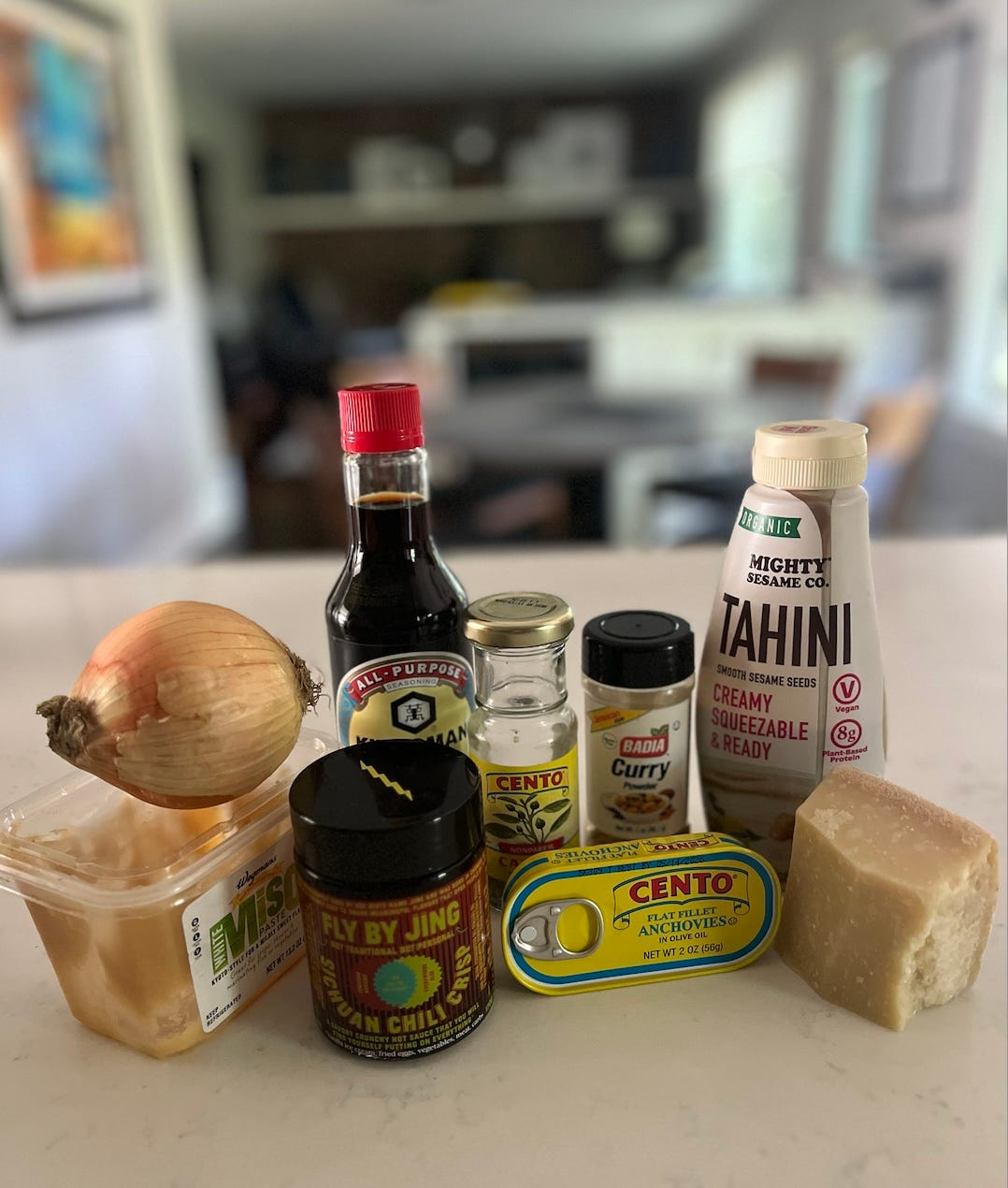
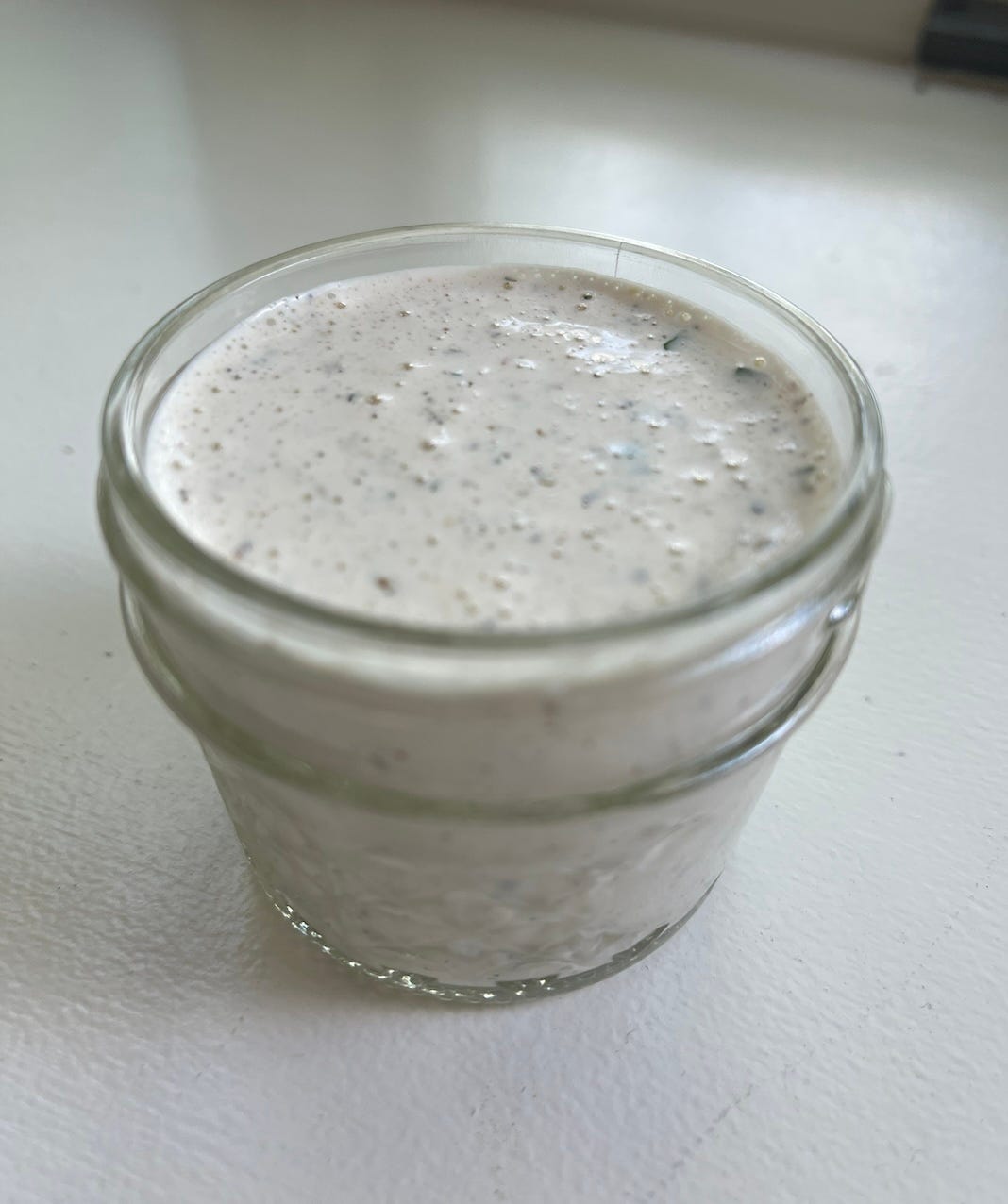

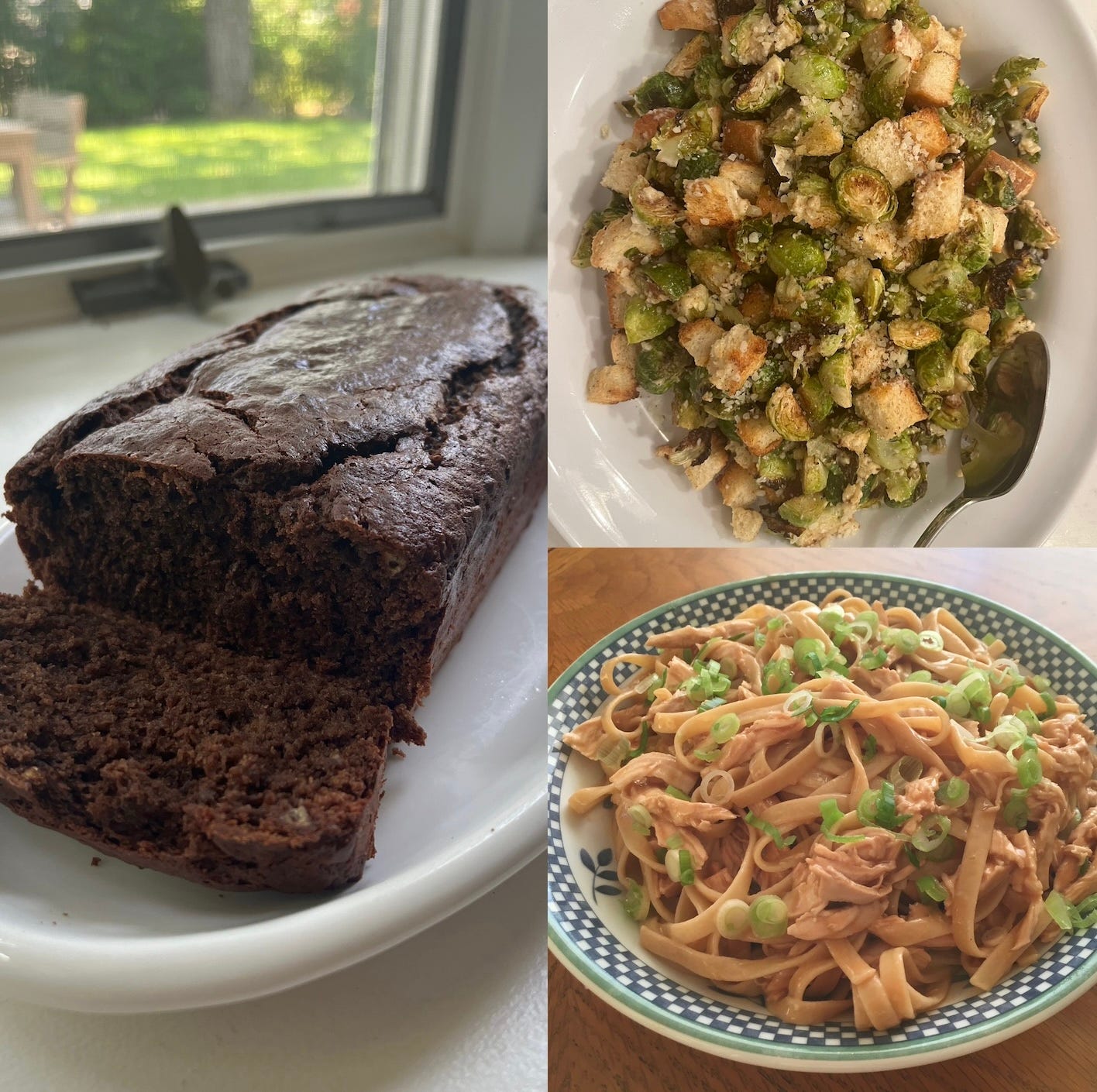
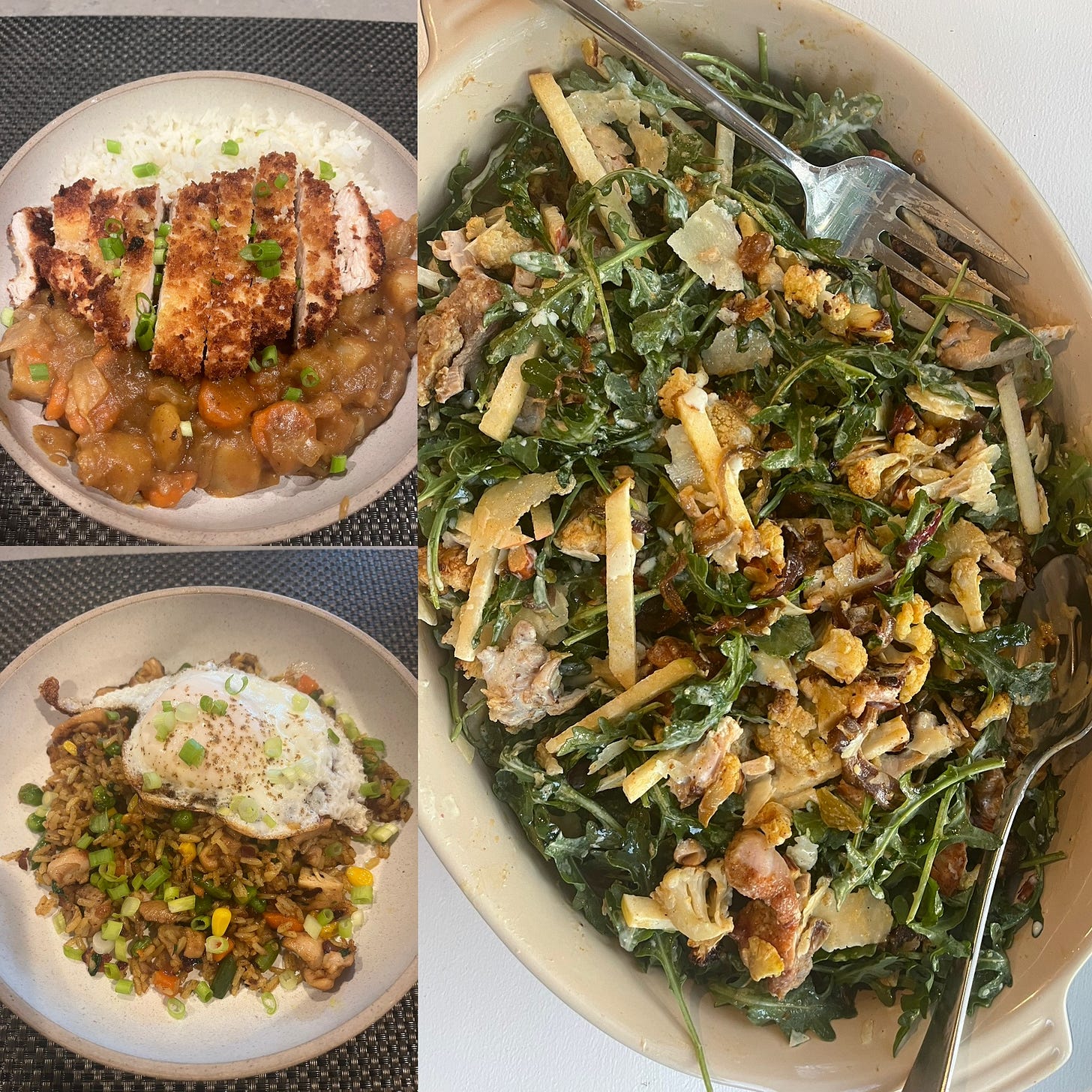

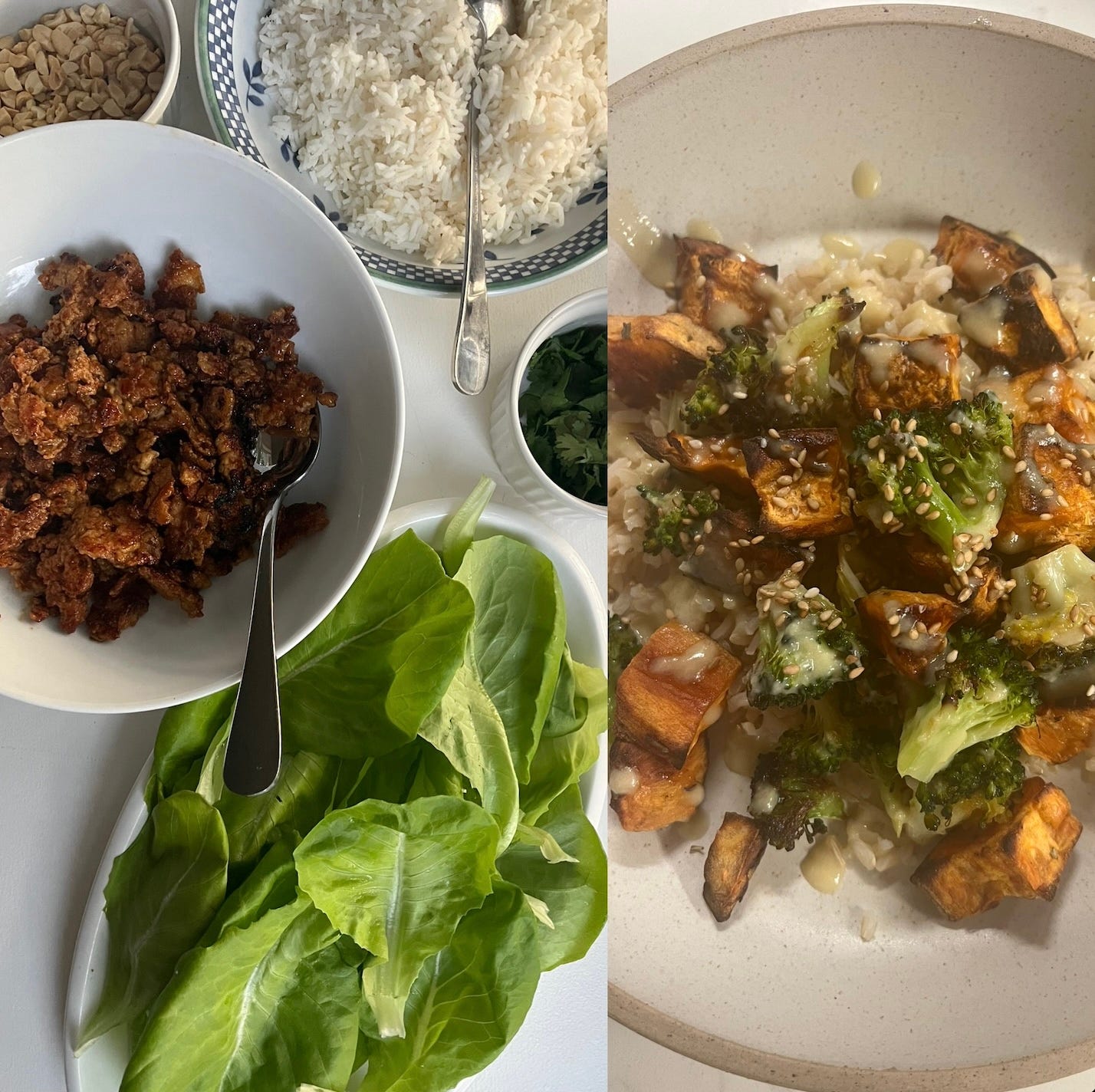
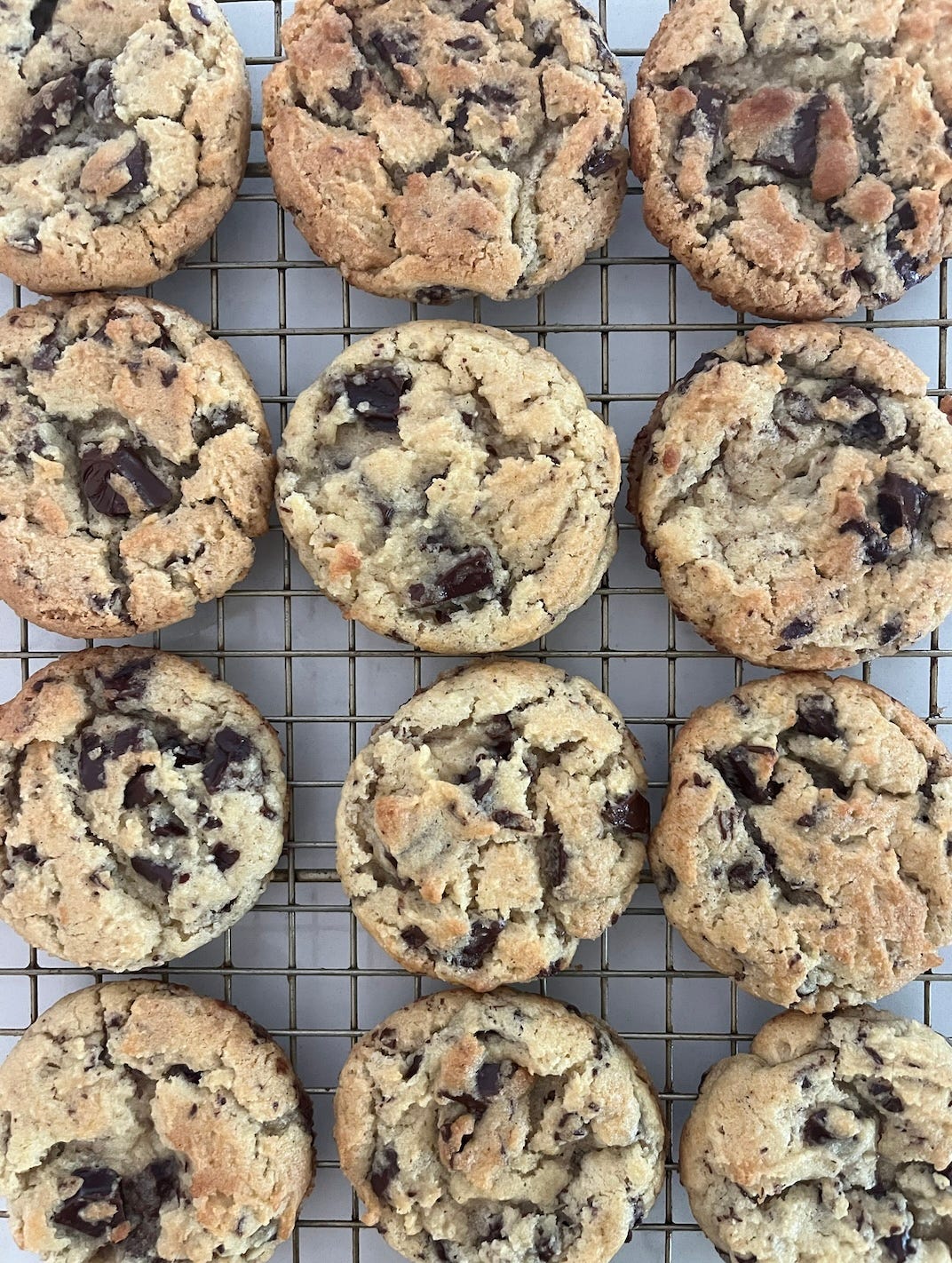
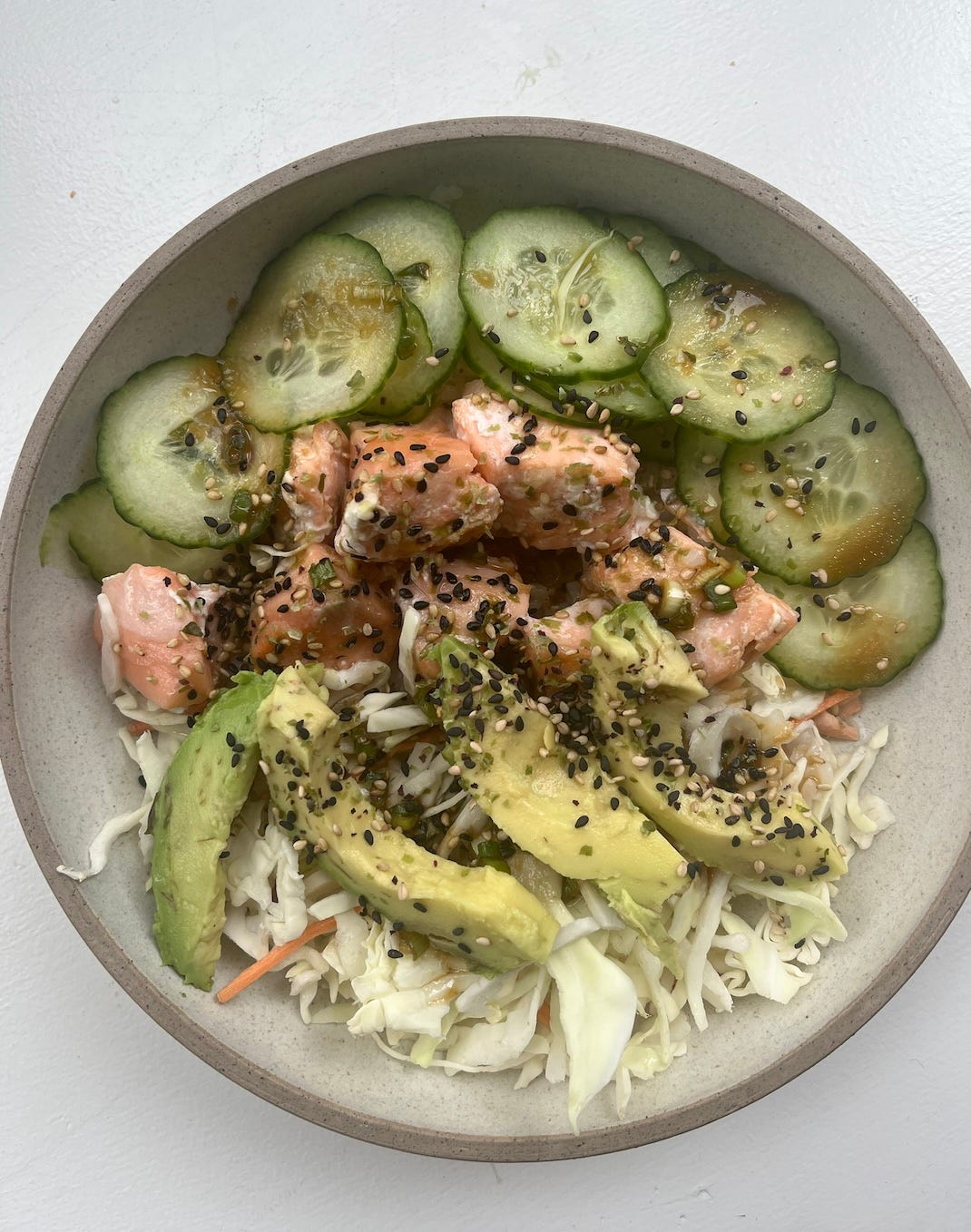
Okay I love this! So helpful! Curry powder is always in my kitchen but the others are such good reminders 🫰🏻
Shio koji, Tajin, furekake, amachoor powder, vaudavin